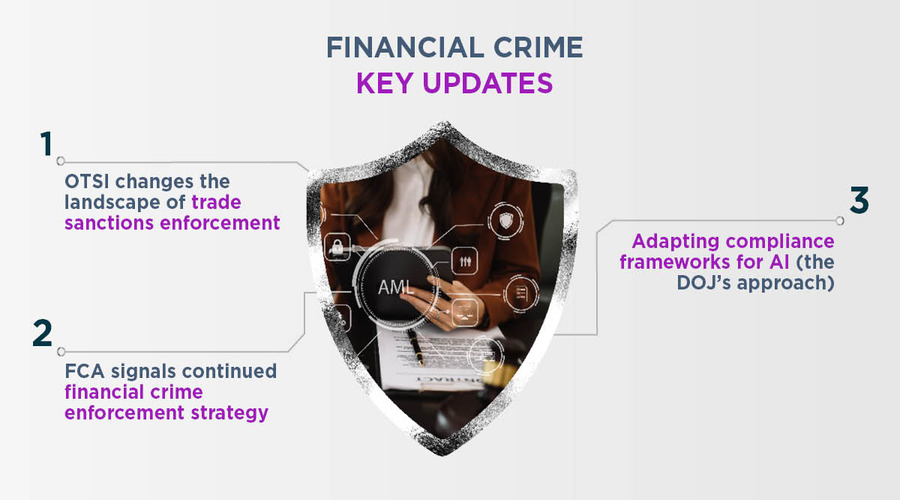
This briefing gives an overview of the key changes to the Prospectus Regulation, the Market Abuse Regulation and MiFID II provided under the EU Listing Act.

This briefing gives an overview of the key changes to the Prospectus Regulation, the Market Abuse Regulation and MiFID II provided under the EU Listing Act.
The EU Listing Act comprised a suite of innovative measures designed to empower businesses by diversifying their financing options beyond traditional bank lending. This strategic initiative aims to support companies in their growth journey and facilitate the evolution of their financing structures as they mature. One of the purposes of the EU Listing Act is to facilitate access to capital specifically for small and medium-sized companies (“SMEs”), but the scope also includes simplification for all listed companies in order to make public markets in the EU more attractive.
The EU Listing Act brings substantial changes to the Prospectus Regulation (Regulation (EU) No. 2017/1129 of the European Parliament and of the Council of 14 June 2017, the “Prospectus Regulation”), the Market Abuse Regulation (Regulation (EU) No. 596/2014 of the European Parliament and of the Council of 16 April 2014 on market abuse, the “Market Abuse Regulation”) and MiFID II (Directive (EU) No. 2014/65 of the European Parliament and of the Council of 15 May 2014 on markets in financial instruments, the “MiFID II”).
The Council of the EU adopted the EU Listing Act on 8 October 2024. The EU Listing Act will enter into force 20 days after its publication in the Official Journal of the EU. Some of the measures will become applicable 15 or 18 months after publication (due to the need to create guidelines or level 2 measures) and have been mentioned in this context.
This note summarizes some of the key amendments to (1) the Prospectus Regulation, (2) the Market Abuse Regulation and (3) MiFID II.
The EU Listing Act aims to mitigate the challenges arising from the lengthy, complex, and costly nature of prospectus documentation, as well as the extended duration of the scrutiny and approval process. One of the primary objectives of the EU Listing Act is to make it easier for SMEs to access capital markets.
The EU Growth Prospectus is a lighter form of prospectus, introduced by Regulation (EU) 2017/1129, and is available for SMEs. The EU Listing Act updates its regime. The prospectus has lighter requirements to make the listing documentation for SMEs even less complex and burdensome. A simplified and standardized document, limited in length and complexity for SMEs.
The regime is applicable to SMEs or issuers with securities that have been or are to be admitted to trading on SME growth markets (unless such issuers have securities that have been admitted to trading on a regulated market). Additionally it applies to issuers where the total aggregated consideration in the EU for the securities offered to the public is less than €50 million over a period of 12 months, on the condition that they do not have securities listed on a regulated market or a Multilateral Trading Facility (MTF), and have maintained an average workforce of up to 499 employees in the preceding financial year.
This prospectus is shorter, less complex, and more standardized than the full prospectus under previous regime, making it easier for smaller companies to comply with regulatory demands without incurring prohibitive costs. The document is limited in terms of content and page numbers, reflecting a balance between providing essential information for investors and reducing unnecessary legal and compliance burdens on issuers.
The aim here is to provide investors with enough relevant information while minimizing the extensive legal preparation work associated with a more comprehensive prospectus. By focusing on essential disclosures, the Growth Issuance Prospectus is seen as a vital tool in facilitating the entry of SMEs into public markets.
The EU Growth Prospectus requires preparation of level 2 measures and will apply 15 months after the EU Listing Act comes into force.
The current exemption to publish a prospectus applies to offers of securities to the public with a total consideration in the European Union of less than €1 million calculated over a period of 12 months. Member States may decide to exempt offers of securities to the public from the obligation to publish a prospectus provided that the total consideration of each such offer in the European Union is less than €8 million calculated over a period of 12 months.
In order to reduce market fragmentation, the EU Listing Act replaces the current system by a dual-threshold system. A harmonized threshold of €12 million over a period of 12 months is put in place for the existing prospectus exemption for offers of securities with a small total consideration. Member States have an option to derogate to this principle and only exempt offers with an aggregate consideration in the European Union of less than €5 million.
This adjustment aims to reduce the administrative burden on issuers for smaller capital raisings while maintaining sufficient protection for investors. These provisions will enter into force 18 months after the EU Listing Act comes into force and are subject to member state filing discretion.
A new EU Follow-on Prospectus will replace the simplified disclosure regime for secondary issuances under the Prospectus Regulation, which has been considered too prescriptive and too close to a standard prospectus.
This regime is made for companies that are seeking to make a transition from an SME growth market to a regulated market, provided that their securities have been admitted to trading on an SME growth market continuously for at least the preceding 18 months. However, issuers who has only non-equity securities admitted to trading on a regulated market or an SME growth market should not be allowed to draw up an EU Follow-on Prospectus for the admission to trading on a regulated market of equity securities.
Contents of the EU Follow-on Prospectus is driven by Annex IV or V of the EU Listing Act. A 50-page limit will apply to the prospectus that relates to shares (excluding the summary).
The EU Follow-on Prospectus requires preparation of level 2 measures and will apply 15 months after the EU Listing Act comes into force.
The EU Listing Act is committed to putting forward an initiative to make access to public markets in the European Union more attractive by reducing compliance costs, and by removing significant obstacles that hold back companies, in particular SMEs, from accessing public markets in the EU.
The 20% threshold exemption from the obligation to publish a prospectus for the admission to trading on a regulated market of securities fungible with securities already admitted to trading on the same regulated market is increased to 30% (over a rolling 12-months period).
The EU Listing Act introduces a new exemption for public offers of less than 30% of the number of securities already admitted to trading on the same regulated market.
This exemption is subject to the issuer not being under an insolvency or a restructuring procedure. The issuer shall file a document containing the information set out in Annex IX with its competent authority, with a maximum length of 11 pages (this document does not need to be approved).
The EU Listing Act introduces a new exemption from the obligation to publish a prospectus for securities fungible with securities that have been admitted to trading for at least 18 months on a regulated market or an SME growth market.
This exemption is subject to the issuer not being under an insolvency or a restructuring procedure and the new securities not being issued in connection with a takeover by means of an exchange offer, a merger or a division. The issuer shall file a document containing the information set out in Annex IX with its competent authority, with a maximum length of 11 pages (this document does not need to be approved).
The EU Listing Act allows issuers to incorporate by reference on a voluntary basis information that is not to be disclosed in a prospectus.
Issuers are not required to publish a supplement to their base prospectus following publication of new annual or interim financial information, when the base prospectus is still valid pursuant to Article 12(1).
The new annual or interim financial information can be incorporated by reference in the base prospectus, provided that the requirements for incorporation by reference, such as electronic publication and language requirements, are fulfilled.
Issuers are allowed to voluntarily publish such information on a prospectus. Practically speaking, issuers may wish to consider whether an additional disclosure is required in relation to the information set out in the base prospectus.
The maximum length for a prospectus page is 300 words, with certain exceptions. These include the exclusion of information incorporated by reference and information on issuers with complex financial histories. If an issuer is seeking admission to trading on a regulated market in the EU while simultaneously offering or privately placing securities with investors in a third country, where an offering document is prepared under the regulation of that third country, the 300-page limit does not apply.
Additional ESG disclosure will be required into the prospectus following the entry into application of the EU Listing Act:
Companies that offer equity securities to the public or seek admission to trading on a regulated market should incorporate in the prospectus the sustainability reporting required by Directive 2013/34/EU.
The Commission has received power to propose level 2 measures in relation to ESG related information to be included in prospectuses for non-equity securities that are advertised as taking into account ESG factors or pursuing ESG objectives.
A specific disclosure is inserted in the summary for issuers of equity instruments, which are subject to Article 8 of the EU Taxonomy Regulation (Regulation (EU) No. 2020/852 of 18 June 2020 on the establishment of a framework to facilitate sustainable investment). The prospectus summary must include a statement indicating whether the issuer’s activities are aligned with the environmental sustainability criteria set forth in Articles 3 and 9 of the EU Taxonomy Regulation.
This measure requires guidance from ESMA and will apply 15 months after the EU Listing Act comes into force.
The general purpose of Market Abuse Regulation is to maintain market integrity and investor confidence.
Market Abuse Regulation aims to prevent insider dealing, unlawful disclosure of inside information and market manipulation.
Issuers are therefore subject to various obligations in relation to their disclosure and the recording of their transactions. All of these obligations have a direct practical impact on the business operations of issuers.
The EU Listing Act aims to limit the burden on issuers by addressing disproportionate requirements.
One of the general requirements under Market Abuse Regulation is that inside information must be disclosed as soon as possible.
In a protracted process (e.g. an M&A situation), such a general requirement may create difficulties. Immediate disclosure of inside information may be detrimental to the issuer or the transaction.
The EU Listing Act provide that the immediate disclosure of inside information is no longer required in respect of intermediate steps if those steps are in connection with the bringing about of, or the result of, a particular circumstance or event. In practice, this means that only the final circumstance or event must be disclosed as soon as possible after its occurrence.
These provisions will apply 18 months after the EU Listing Act comes into force.
Under Market Abuse Regulation, the delayed disclosure of inside information is subject to three cumulative conditions:
i. immediate disclosure is likely to prejudice the legitimate interest of the issuer;
ii. delayed disclosure is not likely to mislead the public; and
iii. the issuer is able to ensure confidentiality.
The EU Listing Act does not provide for the amendment of conditions (i) and (iii) above.
However, the EU Listing Act provides for an amendment to condition (ii), which has given rise to interpretation issues. The new condition is worded as follows: “the inside information is not in contrast with the latest public announcement or other type of communication by the issuer […] on the same matter to which the inside information refers”. Although this condition is more objective, guidance from the European Commission, which is empowered to adopt a delegated act to provide a non-exhaustive list of situations, will be key to providing certainty to market participants.
It should be noted that the revised wording is based on ESMA's interpretation of the previous condition and is therefore in line with the position of the EU regulator and market participants.
Under Article 19 of Market Abuse Regulation, persons discharging managerial responsibilities (PDMRs) and persons closely associated with them (PCAs) are required to notify the company and the competent authority of all transactions conducted on their own account relating to shares or debt instruments of the issuer or in related derivatives or other financial instruments, subject to a de minimis threshold (calculated on an individual basis) below which no disclosure is required. Disclosure must be made in a form specified in a template provided under MAR.
In addition, under Market Abuse Regulation, PDMRs and PCAs are restricted from trading during a period before the announcement of a mandatory interim financial report or a year-end report which the relevant issuer is obliged to make public (the so-called “closed period”).
The rationale of the existing regime is to prevent insider dealing and to provide investors with a highly valuable source of information.
The EU Listing Act introduces two important changes to the regime applicable to PDMRs and PCAs, namely on the notification process and on the exemptions during the closed period.
The threshold for this notification regime is now increased from EUR 5,000 to EUR 20,000 per calendar year. However, it should be noted that national competent authorities may decide to raise (up to EUR 50,000) or lower (to EUR 10,000) the threshold.
As previously mentioned, Market Abuse Regulation prohibits trading in the issuer's financial instruments by PDMRs during a period of 30 calendar days prior to the issuer's publication of its annual and interim (mandatory) financial reports. MAR provides for exemptions if very strict conditions are met which are amended by the EU Listing Act as follows:
As a reminder, under Market Abuse Regulation, it is unlawful for any person to disclose to any other person any inside information that may arise from the possession of inside information, unless the disclosure is made in the normal course of that person's employment, profession or duties, or in accordance with certain procedures set out in MAR. In this regard, MAR provides a specific regime for the proper disclosure of inside information in the course of market sounding.
According to Article 11 of Market Abuse Regulation, a market sounding is any communication of information to one or more potential investors (i) by the issuer, by secondary offerors in certain cases or by an issuer's authorised market participants and by third parties acting "on behalf of" or "for the account of" these parties (i.e. a disclosing market participant), (ii) prior to the announcement of a transaction and (iii) made in order to gauge the interest of potential investors in a possible transaction and the terms of the transaction (size, price, etc.).
The list of exempted situations has been extended over the years. From 1 January 2021, the communication of inside information to qualified investors in the context of a private placement of bonds are not automatically considered as an unlawful disclosure of inside information.
The EU Listing Act also amends the market sounding regime provided under MAR. The EU Listing Act clarifies that the market sounding regime is not a mandatory set of rules and procedures and that market sounding is optional for the disclosing market participants. Disclosing market participants may therefore decide whether or not to comply with the information and record keeping requirements of MAR when assessing market interest.
Finally, the EU Listing Act also amends the rules relating to the cessation of the "inside" nature of information. The disclosing market participant must inform the recipient as soon as possible of the cessation of the "inside" nature of information disclosed in the course of a market sounding, unless the information has been publicly announced otherwise. This revised provision will simplify the existing regime and avoid the unnecessary burden of the Market Abuse Regulation on the disclosing market participant to assess for itself when the information ceases to be "inside".
The EU Listing Act requires ESMA to revise the existing Implementing Technical Standards (ITS) on insider lists for issuers admitted to trading on SME growth markets. It should be noted that the final text does not include the EU Commission's initial proposal to introduce a "permanent insiders" format for all issuers' insider lists.
In addition to revising the calculation of fines to make them more proportionate to breaches of disclosure requirements, the EU Listing Act introduces lower maximum fines for SMEs and micro-enterprises. The maximum amounts for these companies are €1,000,000 for violations of Article 17 of Market Abuse Regulation and €400,000 for violations of Articles 18 and/or 19 of Market Abuse Regulation.
The EU Listing Act also contains other amendments to Market Abuse Regulation, namely:
One of the objectives of MiFID II and Regulation (EU) No 600/2014 on market in financial instruments (“MIFIR II”) is to improve the transparency of financial markets (in transactions and in costs) and strengthen customer protection.
To this end, MiFID II and MIFIR II regulate in particular the investment research as well as the free float of listed companies.
The EU Listing Act aims to achieve an appropriate level of transparency, investor protection and market integrity by amending key elements of MiFID II and MIFIR II.
In order to pursue the objectives of market protection, transparency and integrity, the EU Listing Act empowers the European Securities and Market Authority (ESMA) to establish an EU code of conduct for investment sponsored research (i.e. research that is entirely or partly paid for by the issuer).
Investment firms producing issuer-sponsored research would be required to comply with such a code. The code would include minimum independence requirements for the firms producing and distributing the research.
Pursuant to the amendments provided by the EU Listing Act, investment firms providing portfolio management or other investment or ancillary services shall ensure that the research they distribute to clients or potential clients which is paid for, fully or partially, by an issuer shall be labelled as ‘issuer-sponsored research’ only if it is produced in compliance with the EU code of conduct for issuer-sponsored research.
It would also set out measures for the identification, prevention and disclosure of conflicts of interest.
Historically, as noted by the French Autorité des marchés financiers (the “AMF”), the French research market ecosystem has been predominantly focused on "large cap" companies, with investment firms being the main consumers of investment research [1]. The AMF also highlights that there has been a longstanding lack of coverage of SMEs by investment research providers, which is being addressed by the MiFID unbundling regime.
The unbundling regime applies firstly to investment firms providing portfolio management services and secondly to providers of investment research, namely investment banks, brokers and, in some cases, independent research providers. This regime and the changes provided for under the EU Listing Act therefore affect more regulated market participants than the companies and clients who may ultimately benefit from the investment research.
Under Article 27 of MiFID II, investment firms are required to execute orders in the most favourable conditions for their clients (i.e. the best execution principle). The execution of orders by investment firms requires interaction with a broker or investment bank. The broker or investment bank generally also provides research services to the investment firm. Therefore, in practice, it may be difficult for an investment firm to comply with the best execution principle when investment research is provided concurrently and without being charged separately. For example, investment firms may find themselves paying more for the investment bank or broker to execute the order than the latter would have charged if the cost of the research had been clearly separated from the cost of executing the order.
Therefore, under MiFID II, investment firms that provide portfolio management or investment advice on an independent basis must pay for the research they request, either by paying for it themselves or by passing it on to their clients. The cost of research is therefore “unbundled” from the cost of other services provided to the investment firm. These "research unbundling" rules aim to reduce the potential conflict of interest for those investment firms that provide both execution and research services. In addition, these unbundling rules incentivise investment banks and brokers to produce better quality research by separating the price of research from the price of order execution (in practice, investment firms or brokers tended to provide research "for free" when the price was bundled with order execution assistance).
However, the EU legislator has already recognised that the regime has some drawbacks (in particular, it has been recognised that MIFID II research unbundling rules may have disproportionately affected SMEs) and changes have been made back in 2021. For example, bundled payments for services and research will be allowed for SMEs with a market capitalisation of less than €1 billion for a period of 36 months prior to the provision of the research.
In order to revitalise the investment research market and ensure sufficient research coverage of companies, the EU Listing Act further adapts the regime and provides more flexibility for market participants to organise payments for execution services and research. The EU Listing Act removes the €1 billion threshold. In addition, investment firms must inform clients of (i) their choice to pay jointly or separately for the execution of investment services and research and (ii) of the firm's policy on investment services and research, thereby ensuring transparency and compliance with the firm's policy. In the case of joint payment for research and execution services, the EU Listing Act provides that clients should be entitled to receive information (on request and on an annual basis) on the total costs attributable to third-party research provided to the investment firm, provided that such costs are known to the investment firm.
The Listing Directive takes account of the reduction in the number of conditions imposed on participants wishing to have their shares admitted to a regulated market and of recent legislative developments. To this end, the Listing Directive repeals Directive 2001/34/EC on the admission of securities to official stock exchange listing and on information to be published on those securities.
The transfer of the relevant provisions to MiFID II will ensure continuity and consistency in the EU legislative and regulatory framework.
Following the transfer to MiFID II, it should be noted that:
The mostly positive changes to the Prospectus Regulation, Market Abuse Regulation and MiFID II introduced by the EU Listing Act provide much needed flexibility for companies seeking to list or raise additional capital on European markets, particularly for SMEs. The amendments to the EU Listing Act aimed to reduce the compliance burden on issuers and other market participants, while maintaining the objectives of enhancing legal clarity and protecting investors and market integrity. In a newsletter dated 15 March 2024, the EU Commission has indicated that “it is estimated that EU listed companies will save approximately €100 million per year from lower compliance costs, with companies saving €67 million per year from simpler prospectus rules alone”. These changes have been eagerly awaited by market participants and practitioners to enhance the overall attractiveness of EU capital markets and will contribute to the wider objectives of the Capital Markets Union (CMU).
[1] Reviving research in the wake of MiFID II - Observations, issues and recommendations, January 2020.
If you have a query that you would like to discuss, please get in touch with our specialists.


Subscribe for legal insights, industry updates, events and webinars to your inbox
Sign up nowGet up to date with our latest news on LinkedIn
Follow now

